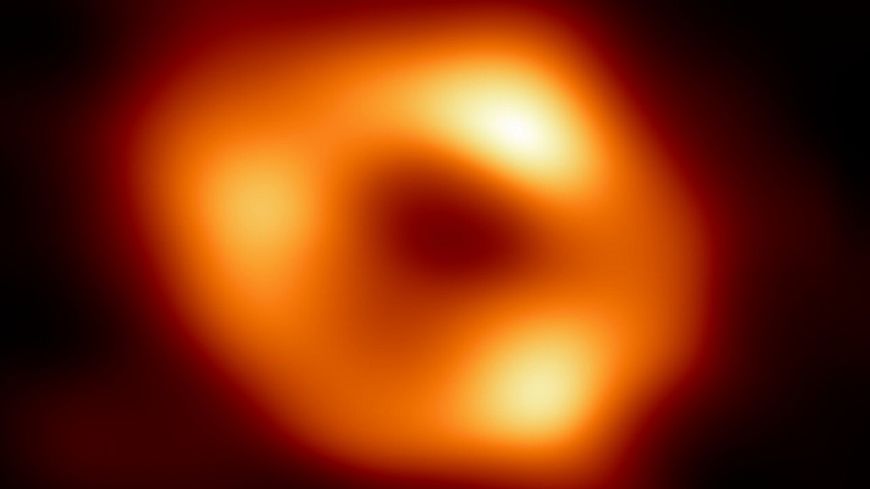It’s a first « revolutionary« , in the words of EHT, the international team of astronomers who worked on this project. This Thursday, May 12, they published the very first image of the black hole Sagittarius A* located in the heart of our galaxy, the Milky Way. « I can show you the image of the black hole Sgr A* at the center of the galaxy« , announced to applause Huib Jan Van Langevelde, director of the EHT project, at a press conference in Garching, Germany.

– European Southern Observatory
If technically it is not possible to « see » a black hole, due to the density and the force of gravity so extreme that the object prevents light from escaping it, it is however possible to observe matter that circulates around the black hole, before being « swallowed » into it.
« We have direct proof that this object is a black hole« , then explained Sara Issaoun, of the Harvard Center for Astrophysics, describing « the gas cloud (around the black hole) which emits radio waves and which we have observed« .
A mass of about four million suns
Sagittarius A*, named for its detection in the direction of the constellation Sagittarius, has a mass of about four million suns and is 27,000 light years from Earth. Its existence has been assumed since 1974, with the detection of an unusual radio source at the center of the galaxy.
The EHT, an international network of eight radio-astronomical observatories, had brought in 2019 the historic image of M87 *, a supermassive black hole of six billion solar masses in its galaxy, Messier 87, located at 55 million years. light. With its four million solar mass, Sgr A* is a featherweight in the bestiary of supermassive black holes.
The « silhouette » of the black hole silhouetted against a luminous disc of matter is reminiscent of the black hole in the distant galaxy M87, which is much larger than ours. Scientists see it as proof that the same mechanisms of physics are at work at the heart of two systems of very different sizes. This confirms Einstein’s predictions of general relativity.
A very old black hole
Sagittarius A* is as old as our galaxy, about 13 billion years old, and it has lost its appetite, meaning it swallows very little matter. « If you ate like him, it would be the equivalent of a grain of rice every two million years, » smiled Sara Issaoun. Unlike its illustrious congener, M87*, which is still celebrating. And Earthlings have all the less to fear as our planet is far from the galactic center.
« We have two completely different types of galaxies and two very different masses of black holes, but near their edges these holes look surprisingly similar.“, said Sera Markoff, co-chair of the scientific council of the EHT, in a press release.This tells us that general relativity (along with the theory of gravitation) governs these objects closely“, she added.
Five years of work
The image presented is the result of several hours of observation carried out mainly in 2017, and followed by five years of calculations and simulations, involving more than 300 researchers from 80 institutes. It was much more difficult to obtain than that of M87* because the black hole in the center of the Milky Way is much smaller. The gas cloud surrounding it, before being swallowed up, takes barely twelve minutes to go around it, compared to more than two weeks for M87*.
The luminosity and configuration of the gas therefore changed rapidly during the observation: « It’s kind of like trying to take a clear picture of a puppy chasing its tail.« Commented Chi-Kwan Chan, a scientist from the EHT. The two images and their comparison will make it possible to study in more detail the behavior of matter in the most extreme environment in the Universe, »with gases heated to billions of degrees, powerful magnetic currents and matter moving at a speed close to light“, explained to AFP, Pr. Heino Falcke, former head of the scientific council of the EHT.
This environment should make it possible to observe the distortions of space-time near a supermassive object and the behavior of gravity, predicted in the general theory of relativity that Albert Einstein postulated in 1915. Anton Zensus, from the Max Planck Institute, ventured to imagine the reaction of the famous scientist: « Would he smile seeing those hundreds of scientists who still haven’t proven him wrong? I rather think he would be ecstatic« .

